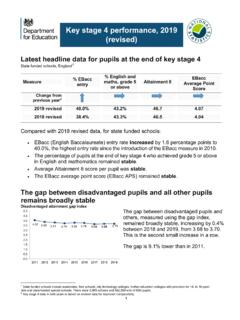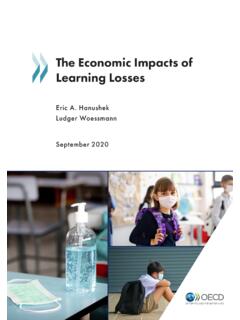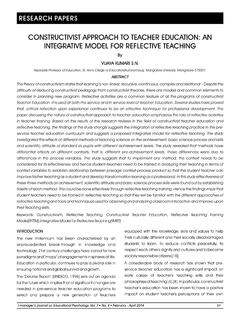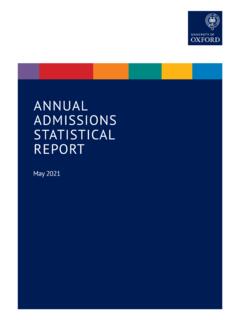Transcription of Supporting the attainment of disadvantaged pupils - GOV.UK
1 Supporting the attainment of disadvantaged pupils Briefing for school leaders November 2015 Caroline Sharp, Shona Macleod and Daniele Bernardinelli, National Foundation for Educational Research Amy Skipp, Ask Research Steve Higgins, Durham University Contents Foreword by Sam Gyimah MP 3 About this briefing 5 Why is it so important to ensure disadvantaged pupils achieve their full potential? 5 What is the most effective way to support disadvantaged pupils achievement? 7 Taking stock of your school s approach 10 What more can schools do to support disadvantaged pupils ? 12 What can school leaders do? 13 School risk factors and how to address them 14 Resources for schools 16 References cited in the text 17 2 Foreword by Sam Gyimah MP As the Minister responsible for the pupil premium, I was delighted to see this headteachers briefing note, summarising the research conducted by NFER on behalf of the Department for Education.
2 The note is a valuable source of evidence about tackling under-achievement among disadvantaged pupils , and provides us all with an opportunity to consider how to have the greatest impact with pupil premium funding. The National Audit Office s recent review of funding for disadvantaged pupils recognises the impact of the pupil premium in focusing attention on raising disadvantaged pupils attainment . It is clear, however, that there is more to do. For example, in 2014, only per cent of disadvantaged pupils achieved 5 A*-C including English and maths GCSEs, compared with per cent of other pupils . As the NFER research shows, many schools are overcoming the barriers to attainment faced by their disadvantaged pupils .
3 The lack of progress in other schools suggests that they are not using their pupil premium funding effectively, especially for their more able disadvantaged pupils . Recent reports published by Ofsted and the Sutton Trust support this view, highlighting that too many disadvantaged pupils who do very well early on later fail to meet their potential in their GCSEs. Successful schools have a clear vision for what all their pupils will achieve through high quality teaching, with an ethos that reinforces aspiration and attainment for all. They realise the importance of getting the basics right, like attendance and behaviour, and understand that failing to put these building blocks in place will undermine the effectiveness of the pupil premium in raising standards.
4 Successful schools adopt a whole school approach to their use of the pupil premium that delivers on the full potential of every pupil , including nurturing their more able pupils to excel. Successful schools deploy the best staff to support their most disadvantaged pupils , and use their resources to develop the skills and roles of their teachers and teaching assistants. Irrespective of where a school is on its journey it can always go further. In addition to reflecting on the advice in this briefing I would encourage schools to consider 3 commissioning a pupil premium review; the NCTL website maintains a list of reviewers. I also hope that successful schools, including the pupil premium award winners, will look for opportunities to help other schools on their journey, using the pupil premium in ways that raise standards for all.
5 Sam Gyimah MP Parliamentary Under Secretary of State for Childcare and Education 4 About this briefing This briefing was written by the National Foundation for Educational Research (NFER) and is based on national research with primary, secondary and special schools across England. The research was conducted for the Department for Education by NFER. The research team analysed national performance data for disadvantaged pupils (defined as pupils eligible for the pupil premium at the time of the research) and identified schools where disadvantaged pupils were making more or less progress than expected, given the characteristics of the pupils and schools. The team sent a survey to more and less successful primary and secondary schools in 2015: 1,329 schools responded to the survey and 49 school leaders from primary, secondary and special schools took part in interviews.
6 Why is it so important to ensure disadvantaged pupils achieve their full potential? The educational performance of pupils from disadvantaged backgrounds (commonly defined in terms of family socio-economic status) is much lower than their peers, and England has a relatively large achievement gap among countries in the Organization for Economic Cooperation and Development (OECD). There has been good progress in the absolute attainment of poorer children in the last few years, with twice as many pupils eligible for free school meals (FSM) achieving five good GCSEs including English and mathematics in 2013 than in 2005. But the achievement of other pupils has also improved and so the attainment gap has only narrowed slightly.
7 In 2014, only per cent of disadvantaged pupils achieved 5 A*-C including English and maths GCSEs, compared with per cent of all other pupils . Recognising the need to improve the performance of disadvantaged pupils , the Government introduced the pupil premium in 2011. This allocates specific funding to schools for each pupil from a disadvantaged background1. Disadvantage has a big influence on pupils life chances. As the Social Mobility and Child Poverty Commission s 2014 State of the Nation report highlights, pupils from disadvantaged backgrounds are: twice as likely to be not in education, employment or training (NEET) and at higher risk of ending up in poverty as adults.
8 1 Including pupils eligible for FSM within the past six years and pupils looked after by the local authority. For more details of eligibility, please see -2015-government-policy-education-of-dis advantaged-children/ 5 pupils of all abilities are affected. A report published by the Sutton Trust estimates that around 7,000 pupils each year who were in the top ten per cent at age 11 fail to achieve in the top 25 per cent at GCSE: boys and pupils eligible for the pupil premium are most likely to be in this missing talent group. Put simply, a child s socio-economic background things they can t choose like the street they grew up on and how much their parents earn have too much of an impact on how well they do at school and the choices they have later in life.
9 Teach First website But it doesn t have to be like this. Schools can help break the link between disadvantage and performance by Supporting disadvantaged pupils to achieve their full potential. The following chart illustrates how differently schools perform2. The diagonal line shows the relationship between the average attainment of disadvantaged pupils at Key Stage 2 and the attainment of disadvantaged pupils at Key Stage 4. Figure 1: Secondary school results for disadvantaged pupils Source: NFER analysis of national performance data 2 The chart shows results for a representative sample of 400 schools nationally, selected to include schools across the full range of performance.
10 Note that there was a similar range of results among primary schools at Key Stage 2. 6 Each dot represents a school: the higher the dot is above the diagonal line, the better the progress of their disadvantaged pupils (and the further below the line, the worse the progress of their disadvantaged pupils ). The red circles show the large difference in disadvantaged pupils average attainment in two schools where disadvantaged pupils had similar results at Key Stage 2. This demonstrates that some schools are doing much better than others with a similar intake. If all secondary schools did as well as the best performing school with a similar intake (based on attainment at age 11 of pupils entering the school), the number of pupils achieving five good GCSEs including English and maths would be 37 percent higher.
















